The Nimrod
| Builder | Alexander Stephens and Sons Ltd, Dundee, Scotland |
|---|---|
| Launched | 1865 |
| Type | Barquentine / 1 funnel, 3 masts |
| Length | 41.5m |
| Beam | 8.2m |
| Expedition | British Antarctic (Nimrod) Expedition 1907–09 |
| Led by | Sir Ernest Shackleton |
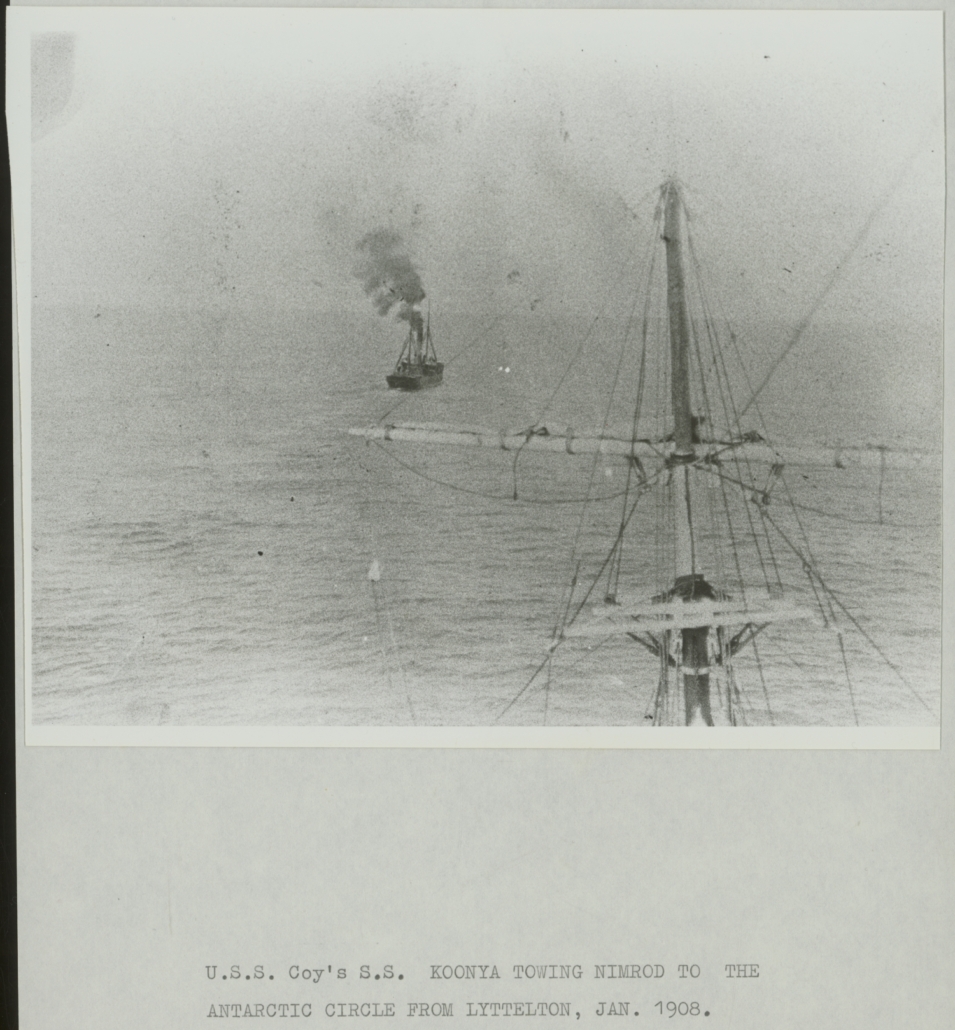
Sir Ernest Shakleton British Antarctic (Nimrod) Expedition 1907–09
In 1907, Ernest Shackleton launched his first Antarctic expedition as leader. The ship chosen for the journey was the Nimrod, a small and aging sealer originally built in 1867. Shackleton had considered renaming the vessel Endurance, drawn from his family motto Fortitudine Vincimus which means by endurance we conquer, but ultimately saved the name for a future venture.
At more than forty years old and weighing just over 300 tons, Nimrod was slow, weathered, and in poor condition. Her top speed was only six knots, and her engines were weak. When she arrived in the Thames in mid 1907, her battered appearance caused concern. Despite her shortcomings, Shackleton retained her name and commissioned a major refit. Her rig was changed from schooner to barquentine, and by late July she was declared ready for the long voyage south.
On 30 July 1907, Nimrod departed the East India Docks in London. In the Thames Estuary, a Royal Navy torpedo boat intercepted her with an order to attend the Royal Regatta at Cowes. There, the humble and soot streaked ship was inspected by King Edward VII and his entourage. Shackleton was presented with a flag by Queen Alexandra to take with him to Antarctica.
From Cowes, Nimrod sailed to Torquay, and on 7 August she finally departed England. After a long journey to the Southern Hemisphere, she reached Lyttelton in New Zealand, where she was loaded with final provisions. These included a motor car packed in a crate, 10 Manchurian ponies, twenty live sheep, and over 250 tons of coal and supplies. She was so heavily laden that her Plimsoll line was submerged by nearly two feet, leaving only about one metre of freeboard above the waterline.
On New Year’s Day 1908, Nimrod departed Lyttelton for Antarctica. To conserve coal, she was towed more than 1500 miles across the Southern Ocean by the steel steamer Koonya. Within days Nimrod was taking on water through the scupper holes and wash ports. Shackleton later described the difficult voyage as being like a reluctant child being dragged to school. The tow ended when the first icebergs came into view, and Nimrod continued under her own power.
Shackleton had originally planned to establish a base on the edge of the Great Ice Barrier, now known as the Ross Ice Shelf. But a large section of the shelf had broken away since his previous visit with Scott’s Discovery expedition. Heavy pack ice blocked the approach, and Shackleton was forced to head to McMurdo Sound. This was a difficult decision, as he had earlier agreed not to establish a base in the same region out of respect for Scott’s claim to the area.
Further challenges arose when sea ice conditions prevented access to Hut Point. On 16 January 1908, Shackleton selected a new site at Cape Royds, approximately 32 kilometres further north. The area had been named by Scott, but no base had been built there. The team began constructing a small prefabricated hut, which would serve as their winter quarters.
Unloading Nimrod was repeatedly interrupted by shifting ice and deteriorating weather. On 3 February, ice finally cleared to allow access back to Hut Point, and Nimrod was fastened alongside the ice edge. But worsening conditions and the risk of becoming icebound led Captain Rupert England to move the ship back into open water. His cautious decisions were supported by the crew but frustrated the shore party, who felt his actions disrupted their work and made operations more difficult.
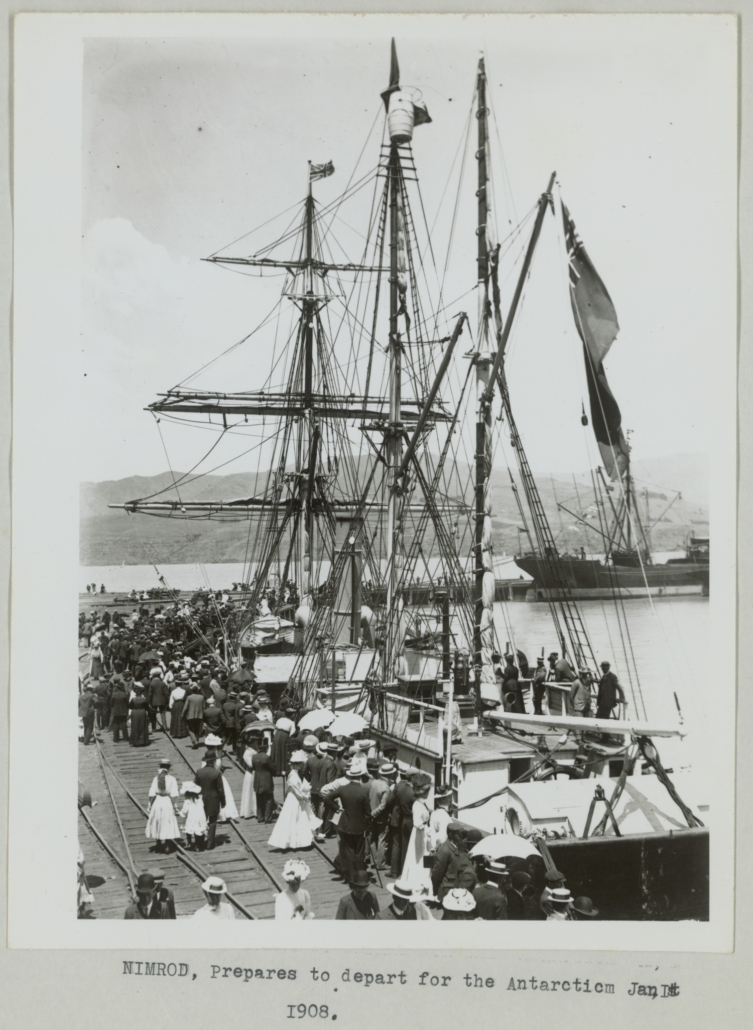
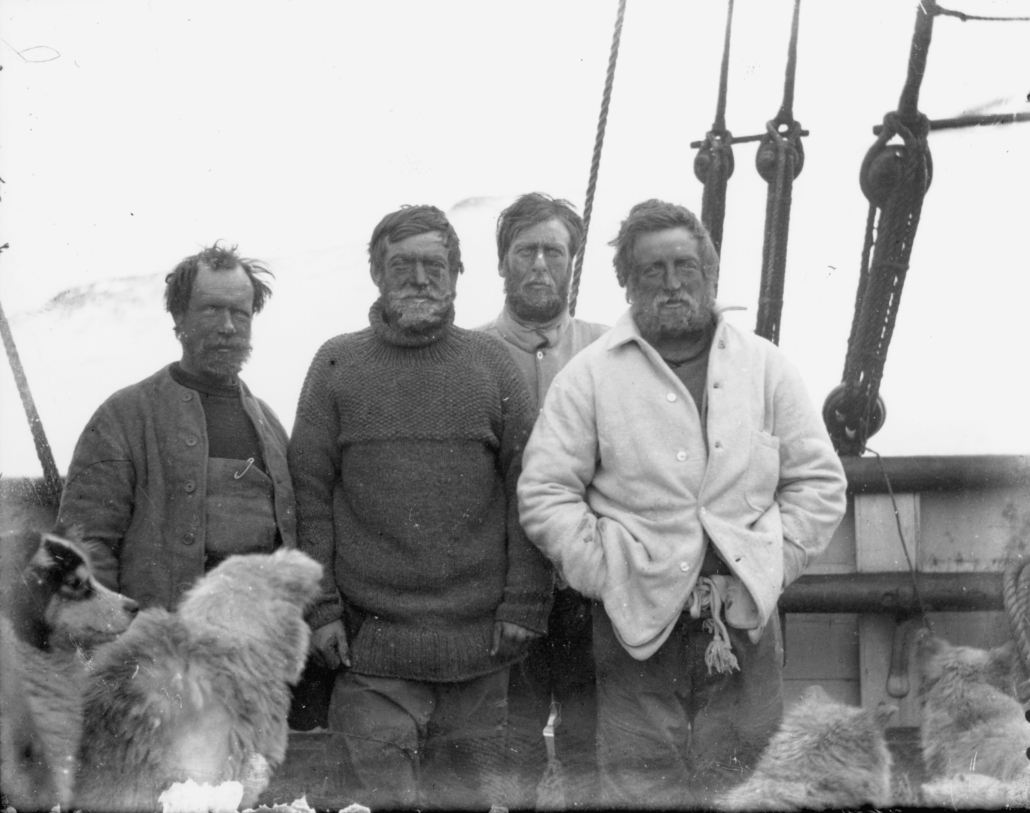
Pioneering Achievements
Shackleton’s expedition achieved a number of significant firsts. In March 1908, a party led by Professor Edgeworth David was the first to climb Mt Erebus. On 16 January 1909, after an epic 1,600km trek, three expedition members – Douglas Mawson, Alistair Mackay, and Professor David – were the first to reach the South Magnetic Pole.
The expedition was the first to test a motor car in Antarctica. Although the Arrol-Johnston was ineffective in snow, it helped transport loads from Nimrod across the sea ice and for trips as far south as the Erebus Glacier Tongue. Additionally, the first book produced and published in Antarctica, Aurora Australis, was printed in the winter of 1908.
As for their main objective – the quest for the Geographic South Pole – sledging commenced in October 1908, the polar team being Shackleton, Jameson Adams, Frank Wild and Eric Marshall. On 9 January 1909, after nearly two-and-a-half-months of trudging, they reached a point 156 km from the Pole. In his diary entry for that day Shackleton recorded: ‘We have shot our bolt, and the tale is latitude 88º 23 South . . . Homeward bound at last. Whatever regrets may be, we have done out best’.
The decision to turn around with the Pole almost in sight was the hardest of Shackleton’s life and has subsequently been called the finest decision ever made in Antarctic exploration. Although it was likely that the team could have made the Pole, Shackleton knew they would probably not make it back and opted to ensure the survival of his men. He later told his wife Emily: ‘I thought you’d rather have a live donkey than a dead lion’. It was the sort of decision which prompted the Polar explorer, Apsley Cherry-Garrard, to say of ‘the Boss’: ‘If I am in the devil of a hole and want to get out of it, give me Shackleton every time’.
After supporting the team for several weeks on arrival, Nimrod departed McMurdo Sound on 22 February 1908 and returned to New Zealand. She came back the following summer to retrieve the men, who had surpassed Scott’s furthest south point by 589 km, discovered 800 km of new mountain range, and found coal and fossils at Mount Buckley. More importantly, they demonstrated a possible route for future expeditions to the Pole.
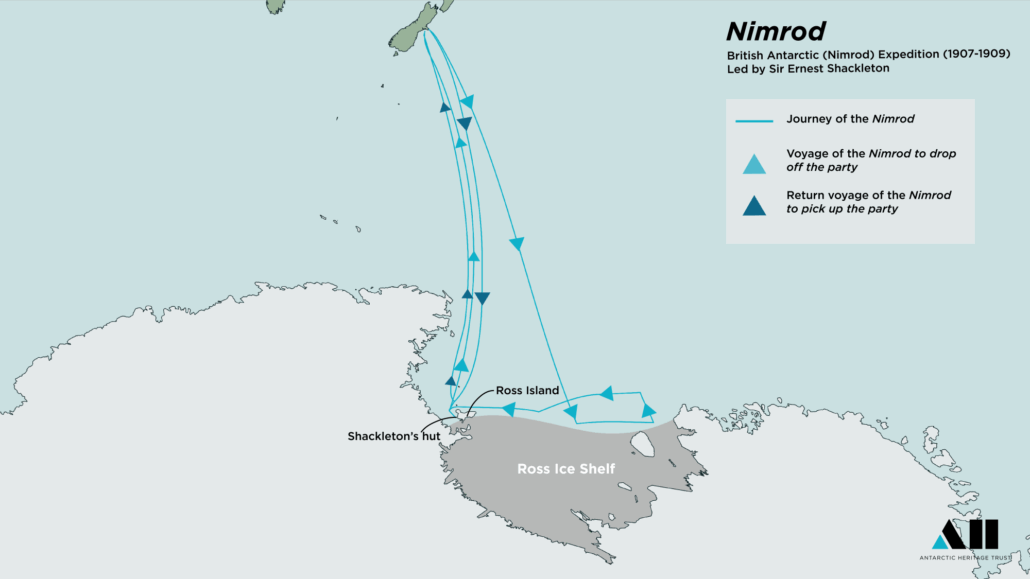
Fate of the Nimrod
After serving as the ship for Shackleton’s historic expedition, the Nimrod continued in commercial service. Tragically, her final voyage ended in disaster in January 1919. While sailing off the coast of Norfolk, England, the ship ran aground on the Barber Sands during a severe storm. The engine room flooded, and the vessel was lost.
Of the twelve crew members on board, only two survived. They were rescued after their lifeboat capsized and was driven ashore. Sadly, ten crew members, including the captain, drowned. The bodies of most were later recovered along the Norfolk coast.
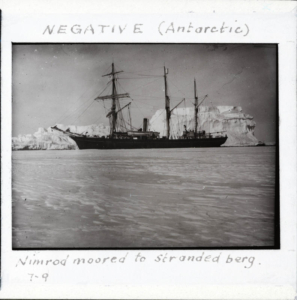
Further Reading
Nimrod: Ernest Shackleton and the Extraordinary Story of the 1907–09 British Antarctic Expedition
Beau Riffenburgh
Published 2004
The Shackleton Letters: Behind the Scenes of the “Nimrod” Expedition
Regina W. Daly
Published 2009-2010
Nimrod Illustrated: Pictures from Lieutenant Shackleton’s British Antarctic Expedition
David M Wilson
Published 2009
![]()
Antarctic Heritage Trust
7 Ron Guthrey Road, Christchurch 8053, New Zealand
Private Bag 4745, Christchurch 8140, New Zealand

© Copyright 2025, Antarctic Heritage Trust Registered Charity: CC24071
Terms and Conditions – Privacy Policy
![]()
Antarctic Heritage Trust
7 Ron Guthrey Road, Christchurch 8053, New Zealand
Private Bag 4745, Christchurch 8140, New Zealand
© Copyright 2025, Antarctic Heritage Trust Registered Charity: CC24071
Terms and Conditions – Privacy Policy
